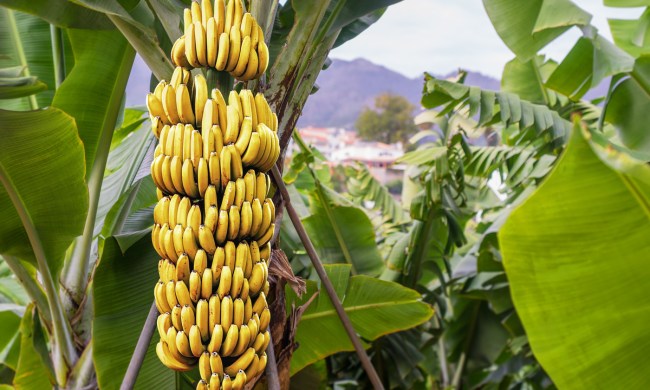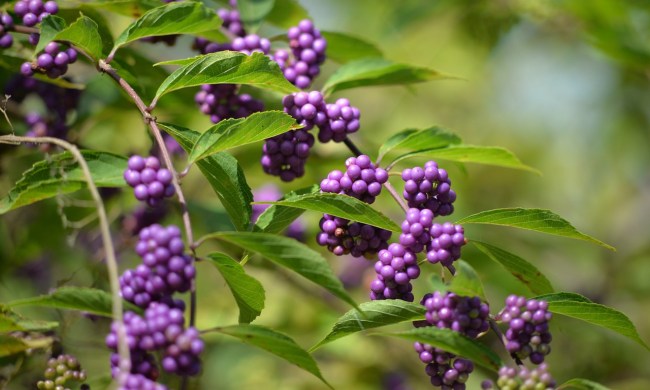Trees make great additions to yards and gardens. They can be a source of shade, fruit, and fun, depending on the tree. Unfortunately, not every living space has room for a magnificent, towering oak tree, but doesn’t mean you have to give up on having trees altogether! There are some really excellent trees that are suited for smaller spaces.
Crepe myrtle
Crepe myrtles — or crape myrtles, depending on where you live — are wonderful trees for patios or small gardens. They stay relatively small, with full-sized varieties growing to between 10 and 20 feet. They are available in dwarf and semi-dwarf varieties as well, making them extremely versatile. Crepe myrtles take very little care and offer lovely masses of pink or red flowers in spring.
Crepe myrtles are sun-loving trees that prefer well-draining soil, as they can develop root rot if planted in soil that retains too much water. Otherwise, crepe myrtles require no special care. They aren’t picky about soil pH or quality and don’t need any fertilizer under most circumstances. Pruning a crepe myrtle is rarely necessary except in the case of damage after storms or the occasional light thinning.
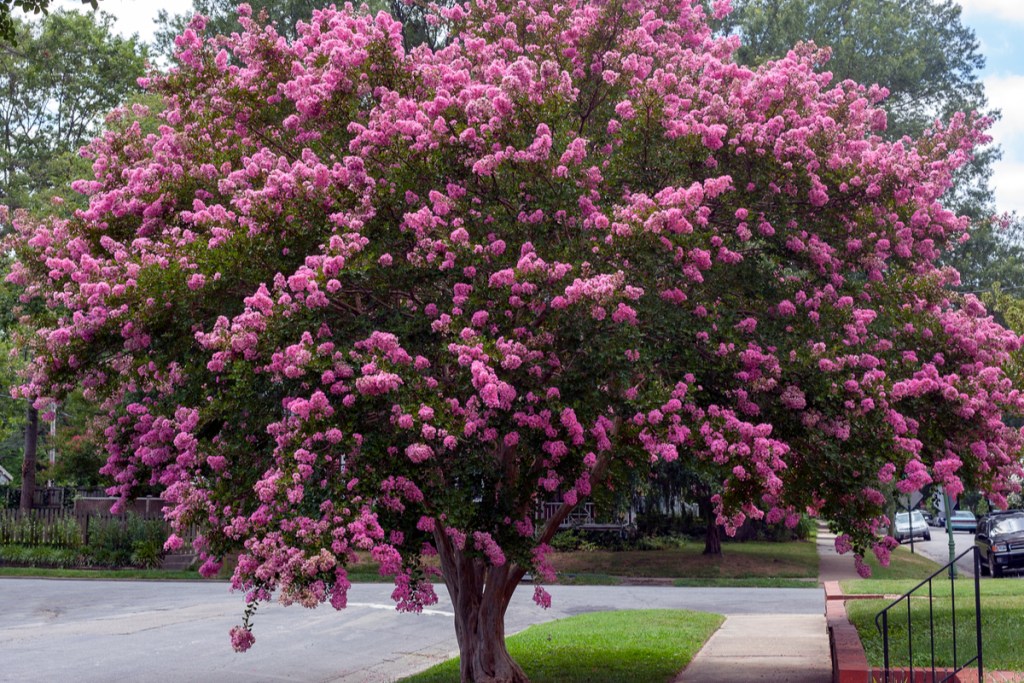
Kumquat tree
Kumquats are delicious little citrus fruits that resemble a cross between cherry tomatoes and oranges. The trees they grow on are equally small; they grow to only about 8 to 15 feet. They do require a little more care than some trees, but their small size makes them great candidates for a container garden. When grown in a container, they rarely reach their full height.
Kumquats, like most citrus fruits, prefer full sun. However, they are more cold-tolerant than most other citrus trees. They grow best in sandy soils and need regular fertilization, especially if you are intending to harvest the fruits of your labor.
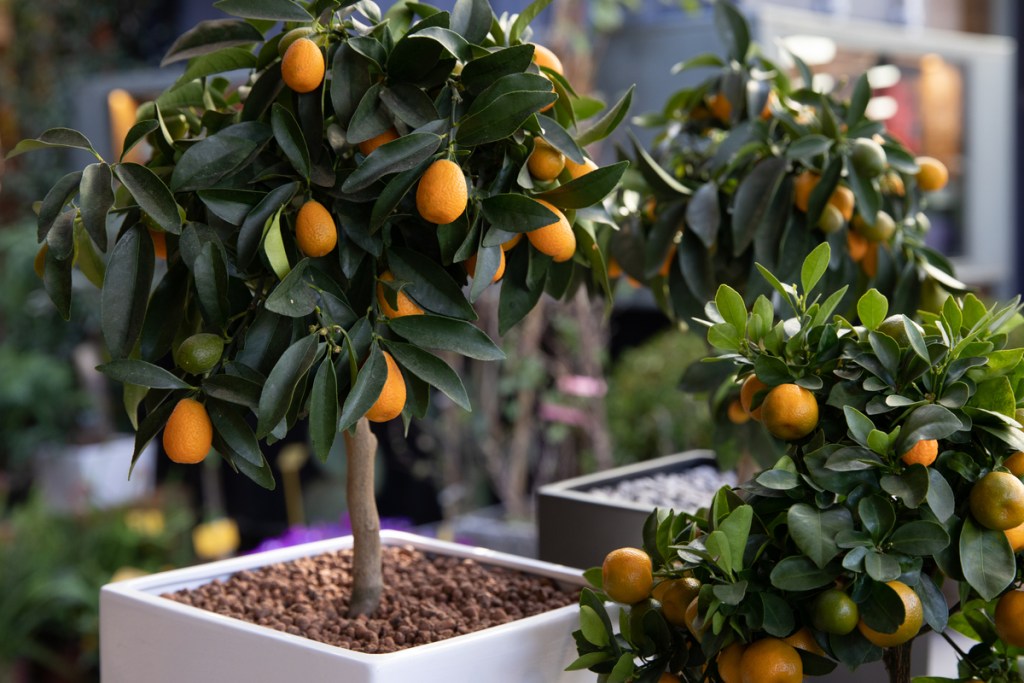
Blue spruce
Blue spruce trees can grow to be enormous, so you may wonder what they’re doing on a list of patio trees. Surprisingly, blue spruce trees actually make lovely container trees. They’re relatively slow growing, and the dwarf varieties stay much smaller than the full-sized spruces, only growing to 12 feet tall.
Many trees find it more difficult to tolerate cold temperatures when grown in containers since their roots have less protection. For those who live farther north and want a container tree, dwarf blue spruce is a great option. Place your spruce in full sun, and make sure your potting soil is rich and loamy, and your blue spruce will do just fine.
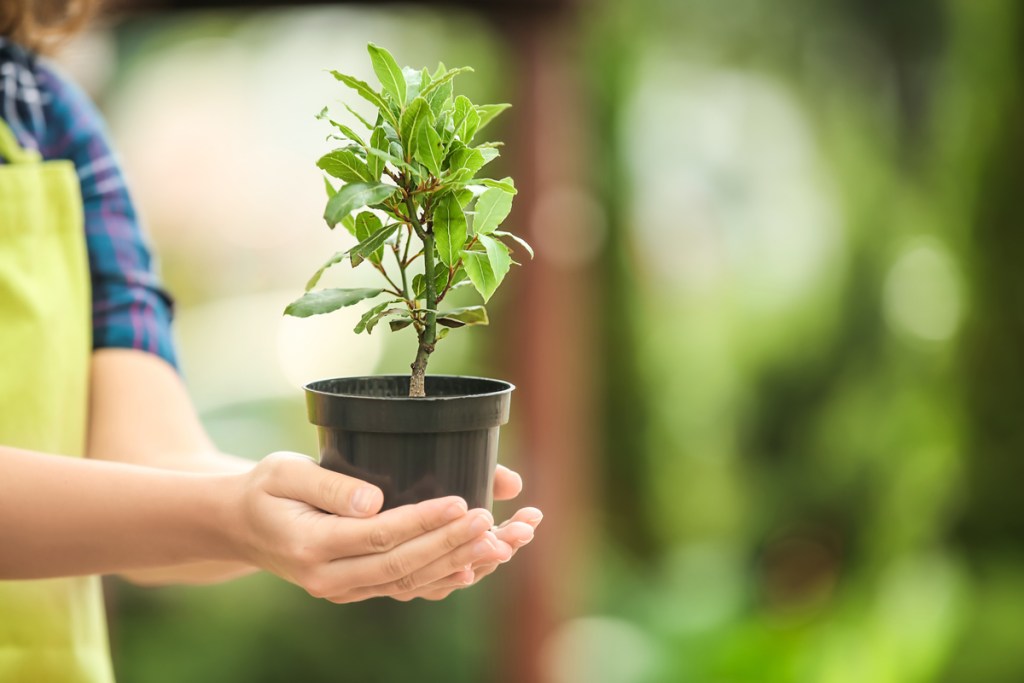
Sweet bay tree
Sweet bay trees stay small when grown in containers and don’t stand out much in terms of appearance. Pick a few leaves, though, and you’ll soon find a fragrant and flavorful addition to any pasta, soup, or meat. Bay leaves are typically used dry, not fresh, but having your own tree to harvest from means you can have bay leaves for your kitchen whenever you’d like.
Sweet bay, or bay laurel, trees enjoy sunny, warm climates. They are notably drought tolerant and only need occasional watering. These trees can be kept outdoors on a sunny patio for most of the year, but they don’t do well in the cold or in high wind.
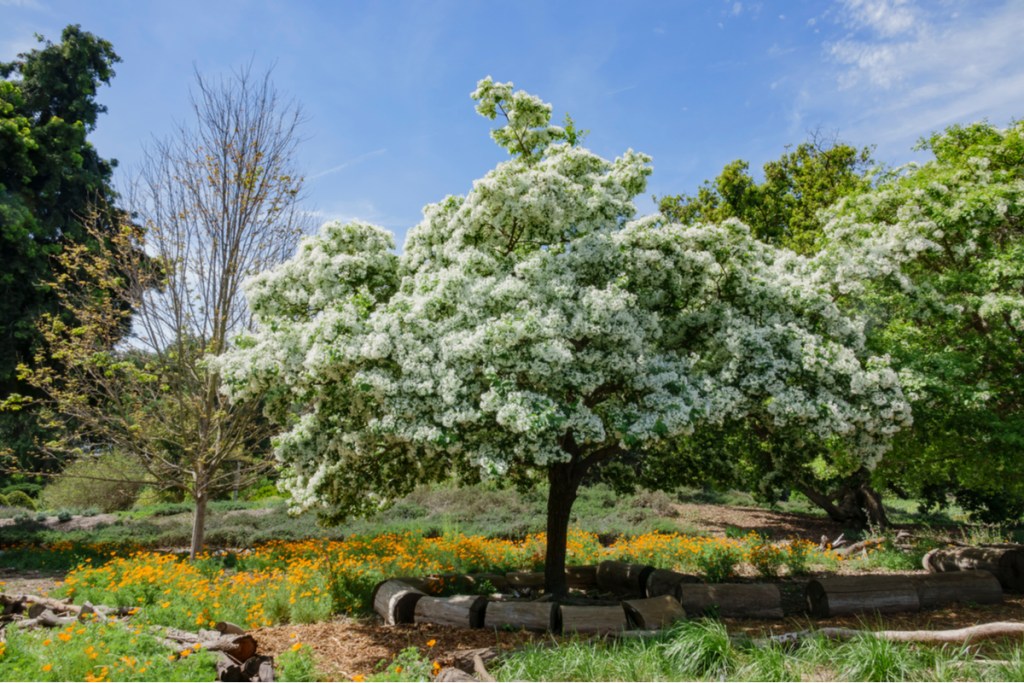
Virginia fringe tree
Virginia fringe trees get their name from the interesting, feathery flowers they grow — and they certainly grow a lot of them! If you’re looking for a tree to serve as a conversation starter or centerpiece, the fringe tree is the tree for you. This tree is also a good choice for those looking to attract birds, as the tree produces bluish-purple berries that birds love.
Fringe trees enjoy the sun but can tolerate partial shade, as well. The sunnier the planting location, though, the more flowers you’ll see. These trees aren’t particularly drought tolerant but should be able to subsist on rain alone in mild climates.
Whether you’re looking for a small tree to plant next to your patio or an even smaller one to grow in a container, these five trees are a great place to start looking. No matter what your climate or space availability, there’s a tree out there that suits your needs. Look for slow growing trees, trees that naturally stay small, or dwarf varieties of larger trees and go from there! Each region is different, so don’t hesitate to reach out to a local nursery for advice on which trees thrive in your area.

